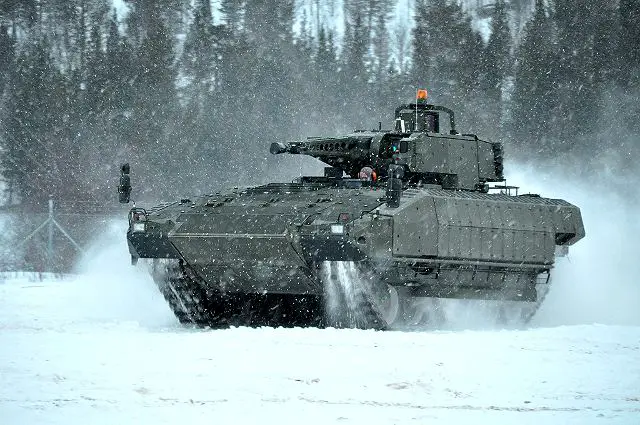
German Army officials have outlined the service's upcoming force structure as the army seeks to retain its broad range of capabilities, from high-intensity operations to peace enforcement and stabilisation.
During the TDN UK Force Protection and Manoeuvre conference, held late in 2013 in Rome, Italy, Lieutenant Colonel Dirk Belda of the German Army Concepts and Capabilities Development Centre (ACCDC) based in Cologne, outlined the centre's role in the future shape of the German Army.
The ACCDC reports to the headquarters of the German Army in Strausberg, which also controls the German Army Training Command, the three German Divisions, and other elements.
According to Col Belda, the ACCDC is based on the components of the German Army and includes two arms: one is combat, while the other encompasses intelligence, reconnaissance, combat support, counter improvised explosive device (C-IED), policy, and commonalties.
Armour, infantry, and army aviation fall under 'combat', while intelligence, joint and indirect fire support, engineers, logistics, signals, and army medical support fall under 'intelligence, reconnaissance, and combat support'. With the exception of medical support, all of these have concept, doctrine, training, organisation, and material sub-divisions.
Essentially, the ACCDC manages the capability of the 'Army System' to optimise the service's overall capabilities. As with most NATO member armies, the German Army has undergone a major restructuring since the end of the Cold War.
It plans to ultimately field a total of 225 Krauss-Maffei Wegmann Leopard 2A6 main battle tanks (MBTs) that will equip four tank battalions.

These Leopard 2A6s will be slowly replaced by the upgraded Leopard 2A7. Krauss-Maffei Wegmann is currently converting 20 ex-Royal Netherlands Army Leopard 2A6 MBTs to the latest Leopard 2A7 configuration, with the longer-term aim of fielding additional units if funding is available. Rheinmetall 120 mm ammunition is also being procured for the Rheinmetall smooth bore gun installed in the Leopard 2A6 and 2A7.
Currently, the German Army has 125 Leopard 2A5 MBTs but of these 105 are being sold to the Polish Army, which already operates 128 former-German Army Leopard 2A4s.
The Marder 1A3 Infantry Fighting Vehicle (IFV) will be replaced by the PSM Puma Armoured Infantry Fighting Vehicle (AIFV) that has been under development by PSM since 2002. The original contract was for 405 Puma AIFVs but this has been reduced to 350, and eight of those are driver training vehicles.
The Puma AIFV programme has been delayed by some major redesign work and only a small number of vehicles have so far been issued for training. An initial operating capability is expected in 2015 and in total the Puma AIFV is to be issued to six German infantry battalions.

Moreover, the German Army is receiving 272 Boxer Multi-Role Armoured Vehicles (MRAVs). There was potential for additional Boxers but no further orders are expected in the short term.
Current plans would see a total of 728 Rheinmetall MAN Military Vehicles Fuchs 1 6x6 vehicles remain in service, and many of these have already been upgraded to the Fuchs 1 A8 standard with an enhanced survivability package.
The army received 185 Krauss-Maffei Wegmann PzH 2000 155 mm/52 cal self-propelled (SP) artillery systems, the last of which arrived in 2002.
PzH 2000 vehicles are being reduced to a frontline strength of only 89 units, but the army is hosting a competition to supply a new 155 mm high explosive projectile with increased range and accuracy.
The two contenders for that requirement are the United States' Raytheon with its M982 Excalibur, and Italy's Oto Melara teamed with Germany's Dieht BGT with its Volcano.
The army's large fleet of European-built multiple rocket launchers (MRLs) is being reduced to just 38 units. These are to be upgraded under the leadership of Kruss-Masffei Wegmann with a new European fire control system also procured by France and Italy.
MRLs in German Army service are referred to as the MARS, with the upgraded version designated the MARS II.
Guided MRL rockets will be procured from Lockheed Martin Missiles & Fire Control and these are meant to provide a significant increase in range as well as a precision effect.
Meanwhile, all German Army air defence assets have been transferred to the German Air Force. These include the Rheinmetall Ozelot low-level air defence system - based on the Rheinmetall Wiesel 2 hull and firing the Stinger surface-to-air missile (SAM) - and the Rheinmetall MANTIS 35 mm counter rocket and mortar system.
The German Army Roland SAM and Gepard twin 35 mm SP air defence systems have already been phased out of service without replacement.
When deliveries are complete, German Army Aviation will consist of 80 NH-90 transport and 40 Tigre attack helicopters, as the larger CH-53G helicopters have been transferred to the air force.
As for subsystems, there is to be an improvement in target acquisition assets as well as the potential for retroactive specification of target co-ordinates by drawing on geo-referenced maps.
Target acquisition will be crucial as munitions with increased range are introduced into service. The army may also use laser target designators or a warhead with 3D terrain data.
The service could additionally deploy non-lethal weapons, possibly including a long-range acoustic hailing device, flash bang munitions, and directed energy weapons - the latter could be a high power microwave and an active denial system.Christopher F Foss, London - IHS Jane's International Defence Review
No comments:
Post a Comment